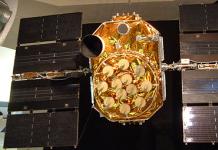It is almost impossible to find products on store shelves that do not contain nutritional supplements. They even put them in bread. An exception is natural food - meat, cereals, milk and greens, but even in this case, you cannot be sure that they do not contain chemistry. For example, fruits are often treated with preservatives, which allows them to preserve their presentation for a long time.
Nutritional supplements are synthetic chemical or natural substances that are not consumed on their own, but are only introduced into foods to impart certain qualities, such as taste, texture, color, smell, shelf life and appearance. There is a lot of talk about the expediency of their use and the effect on the body.
The phrase "food additives" scares many. People began to use them many thousands of years ago. This does not apply to complex chemicals. We are talking about table salt, lactic and acetic acid, spices and spices. They are also considered food additives. For example, carmine, a dye derived from insects, has been used since biblical times to give foods a purple color. Now the substance is called E120.
Until the 20th century, only natural additives were used in the production of products. Gradually, such a science as food chemistry began to develop and artificial additives replaced most of the natural ones. The production of quality and taste improvers was put on stream. Since most nutritional supplements had long names that were difficult to fit on one label, a special labeling system was developed by the European Union for convenience. The name of each nutritional supplement began to begin with "E" - the letter means "Europe". It should be followed by numbers that show the species belongs to a certain group and indicate a certain additive. Subsequently, the system was finalized, and then it was adopted for the international classification.
Classification of food additives by codes
Acidity regulators, sweeteners, leavening agents and glazing agents are included in all of the above groups.
The number of nutritional supplements is growing every day. New effective and safe substances are replacing the old ones. For example, complex additives, which consist of a mixture of additives, have recently become popular. Every year, the lists of permitted additives are updated with new ones. Such substances after the letter E have a code greater than 1000.
Classification of food additives by application
- Dyes(E1…) - designed to restore the color of products that is lost during processing, to increase its intensity, to give a certain color to food. Natural dyes are extracted from roots, berries, leaves and flowers of plants. They can also be of animal origin. Natural dyes contain biologically active, aromatic and flavoring substances, give the food a pleasant appearance. These include carotenoids - yellow, orange, red; lycopene - red; annatto extract - yellow; flavonoids - blue, purple, red, yellow; chlorophyll and its derivatives - green; sugar color - brown; carmine is purple. There are dyes obtained synthetically. Their main advantage over natural ones is rich colors and long shelf life.
- preservatives(E2…) - designed to extend the shelf life of products. Often as preservatives use acetic, benzoic, sorbic and sulfurous acid, salt and ethanol. Preservatives can be antibiotics - nisin, biomycin and nystatin. Synthetic preservatives must not be added to mass-produced foods - children food, fresh meat, bread, flour and.
- Antioxidants(E3…) - prevent spoilage of fats and fat-containing products, slow down the oxidation of wine, soft drinks and protect fruits and vegetables from browning.
- Thickeners(E4 ...) - added to preserve and improve the structure of products. They allow you to give the food the desired consistency. Emulsifiers are responsible for plastic properties and viscosity, for example, thanks to them, bakery products do not stale longer. All permitted thickeners are of natural origin. For example, E406 () - extracted from seaweed, and used in the manufacture of pates, creams and ice cream. E440 (pectin) - from apples, citrus peels. It is added to ice cream and jelly. Gelatin is of animal origin, its source is the bones, tendons and cartilage of farm animals. Starches are obtained from peas, sorghum, corn and potatoes. Emulsifier and antioxidant E476, E322 (lecithin) are extracted from vegetable oils. Egg whites are natural emulsifiers. Recently, synthetic emulsifiers have been used more in industrial production.
- Flavor enhancers(E6 ...) - their purpose is to make the product tastier and more aromatic. To improve the smell and taste, 4 types of additives are used - aroma enhancers, taste enhancers, acidity regulators and flavoring agents. Fresh foods - vegetables, fish, meat have a pronounced aroma and taste, because they contain a lot of nucleotides. Substances enhance the taste by stimulating the endings of the taste buds. During processing or storage, the number of nucleotides decreases, so they are obtained artificially. For example, ethyl maltol and maltol enhance the perception of creamy and fruity aromas. Substances give a fat sensation to low-calorie mayonnaise, ice cream and yogurt. The well-known monosodium glutamate, which has. There is a lot of controversy about sweeteners, especially aspartame, known for being almost 200 times sweeter than sugar. It is hidden under the marking E951.
- Flavors- they are divided into natural, artificial and identical to natural. The former contain natural aromatic substances extracted from vegetable raw materials. These can be distillers of volatile substances, water-alcohol extracts, dry mixes and essences. Flavors identical to natural are obtained by isolating from natural raw materials, or by chemical synthesis. They contain chemical compounds found in raw materials of animal or vegetable origin. Artificial flavors include at least one artificial component, and may also contain identical natural and natural flavors.
Despite the fact that the apple contains many substances that are included in the list of food additives, it cannot be called a dangerous product. The same applies to other products.
Consider some of the popular, but useful supplements.
- E100 -. Helps control weight.
- E101 - riboflavin, aka vitamin B2. Takes an active part in the synthesis of hemoglobin and metabolism.
- E160d -. Strengthens immunity.
- E270 - lactic acid. Has antioxidant properties.
- E300 - vitamin C, she is also vitamin C. Helps to increase immunity, improves skin condition and brings many benefits.
- E322 - lecithin. It supports immunity, improves the quality of bile and blood formation processes.
- E440 -. Cleanse the intestines.
- E916 - calcium iodate. It is used to enrich food with iodine.
Neutral food additives - relatively harmless
- E140 - chlorophyll. Plants turn green.
- E162 - betanin - red dye. It is extracted from beets.
- E170 - calcium carbonate, if simpler - ordinary chalk.
- E202 - potassium sorbitol. It is a natural preservative.
- E290 - carbon dioxide. It helps to turn an ordinary drink into a carbonated one.
- E500 - baking soda. The substance can be considered relatively harmless, since in large quantities it is capable of affecting the intestines and stomach.
- E913 - lanolin. It is used as a glazing agent, especially in the confectionery industry.
Thanks to the research of specialists, changes are regularly made to the lists of allowed and prohibited additives. It is advisable to constantly monitor such information, since unscrupulous manufacturers, in order to reduce the cost of goods, violate production technologies.
Pay attention to additives of synthetic origin. formally they are not prohibited, but many experts consider them unsafe for humans.
For example, monosodium glutamate, which is hidden under the designation E621, is a popular flavor enhancer. You can't call it harmful. Our brains and hearts need it. When the body lacks it, it can produce the substance on its own. With an excess of glutamate, it can have a toxic effect, and more of it goes to the liver and pancreas. It can be addictive allergic reactions, brain and vision damage. The substance is especially dangerous for children. Packages usually do not indicate how much monosodium glutamate is contained in the product. Therefore, it is better not to abuse food containing it.
The safety of the E250 additive raises doubts. The substance can be called a universal additive, since it is used as a dye, antioxidant, preservative and color stabilizer. Despite the fact that the harm of sodium nitrate has been proven, most countries continue to use it. It is part of the sausage and meat products, it can be present in herring, sprats, smoked fish and cheeses. Sodium nitrate is harmful for those who suffer from cholecystitis, dysbacteriosis, have problems with the liver and intestines. Once in the body, the substance is converted into strong carcinogens.
Among synthetic dyes, it is almost impossible to find safe ones. They are capable of exerting mutagenic, allergenic and carcinogenic effects.
Antibiotics used as preservatives cause dysbacteriosis and can cause intestinal diseases. Thickeners tend to absorb substances, both harmful and beneficial, which can interfere with the absorption of minerals and needed by the body components.
The use of phosphates can impair the absorption of calcium, which threatens the development of osteoporosis. Saccharin can cause bladder tumors, and aspartame can compete with glutamate in terms of harmfulness. When heated, it turns into a powerful carcinogen, affects the content of chemicals in the brain, is dangerous for diabetics and has many detrimental effects on the body.
Health and nutritional supplements
Over the long history of existence, nutritional supplements have proven useful. They have played a significant role in improving the taste, shelf life and quality of products, as well as in improving other characteristics. There are many additives that can not have the best effect on the body, but it would also be wrong to ignore the benefits of such substances.
Very popular in the meat and sausage industry, sodium nitrate, known as E250, despite the fact that it is not so safe, prevents the development of a dangerous disease - botulism.
It is impossible to deny the negative impact of food additives. Sometimes people, seeking to extract the maximum benefit, create inedible, from the point of view of common sense, products. Humanity gets many diseases.
- Study food labels and try to choose those that contain a minimum of E.
- Do not purchase unfamiliar products, especially if their composition is rich in additives.
- Avoid products containing sugar substitutes, flavor enhancers, thickeners, preservatives, and colorants.
- Give preference to natural and fresh products.
Nutritional supplements and human health are concepts that are beginning to be linked more and more often. A lot of research is being carried out, as a result of which many new facts are revealed. Modern scientists believe that the increase in the diet of artificial additives and the decrease in the consumption of fresh products is one of the main reasons for the increase in cases of cancer, asthma, obesity, diabetes and depression.
The modern classification of food additives - the numbering system (with the corresponding names of substances) - was created in the 50s of the XX century. It was based on assigning a unique number to each group of similar additives in order to unify, as well as simplify the perception and use of substances designed to “improve” the properties of food products.
Later, after a series of changes and improvements, this classification was included in the Codex Alimentarius (Food Code adopted by the International Commission of FAO / WHO) and became widespread in Europe, as well as in some other countries. The Code is constantly updated and supplemented, and the application of classification standards is advisory in nature.
In Europe, the additive number is preceded by the letter "E", while in Australia and New Zealand additive numbers are indicated without a prefix. In our table of nutritional supplements, “E” is written everywhere, but when searching the page, it is better to enter only the number (this way you will definitely find the supplement you need).
Food additives banned in Russia E
All food additives that are prohibited by the regulatory authorities of the Russian Federation (Rospotrebnadzor and the Ministry of Health of Russia) are highlighted in red in the general list of additives. Banned in Russia (EAEU Customs Union)».
As for the mechanism for banning / permitting food additives in Russia (the Customs Union of the EAEU), everything is quite simple here:
when making decisions on the permission / prohibition of a particular additive, the Russian authorities are guided not by their own research, but by research published by JECFA (Joint Committee on Food Additives FAO / WHO).
This means that the laboratory of food toxicology of the well-known Institute of Nutrition of the Russian Academy of Medical Sciences does not directly participate in the procedure for assessing the hazard / safety of food additives.
Important! In Russia, far from all food additives harmful to health are prohibited. Therefore, do not lose vigilance.
"Masking" food additives harmful to health
A few years ago, most manufacturers did not hesitate to indicate the E codes of food additives in the composition of their products. However, now on packages, cans and bottles, “E-shki” that are not understandable to everyone, but some overseas words that are difficult to read, let alone remember at your leisure and see how harmful / safe it is, are increasingly flashing.
Therefore, when shopping, it is highly desirable to have either a phone with you, or a phone with a camera, or at least a pencil and a piece of paper. Well, even better - a smartphone with Internet access, because then you can check the safety of any nutritional supplement on our website right in the store, "on the spot" so to speak ...
How dangerous are nutritional supplements?
It is believed that in our time, the methods and technologies for researching food additives make it possible to cut off the most harmful and dangerous of them. However, it is not.
If you carefully monitor the change in the list of nutritional supplements E, it becomes obvious that every year more and more “old-timers” who were once considered at least harmless disappear from it. In the media, every year something like this sounds:
"Food supplement E nnn has toxic effect and leads to the formation of malignant tumors.
Moreover, the international committee for almost all food additives sets the allowable daily intake, as well as the maximum content of the substance in a particular product. And in theory, this should protect a person from fatal intoxication. But this often does not happen!
After all, the average inhabitant of our planet during the day eats more than one or two "improved" products. The modern food industry is literally permeated with food additives (the number of allowed food additives in the table is very large). And the detoxification capabilities of our body are simply not enough to remove all the harmful compounds that enter it with food.
What's more, every nutritional supplement poses an even greater threat to the least resilient and protected among us - children, the elderly and allergy sufferers. For them, all food additives E are a kind of "Pandora's box", from which poisoning, allergies, disorders and malfunctions of internal organs, oncology and even death can come out.
By and large, research into the potential harms of dietary supplements is just beginning today.
Therefore, we consider it our duty to give everyone one very simple advice: stay away from any food additives that have an E code! Well, if you can’t completely exclude them from your diet, then at least try to get to know your potential “enemy” better. And we will try to help you with this ...
Today, food is no longer just breakfast, lunch or dinner.
The desire of the consumer to constantly try something new and tasty has given rise to an entire industry for the production of previously unfamiliar semi-finished products, canned food and all kinds of ready-made snacks. And with the advent of a huge range of products, the need arose to carefully study their composition, on which our health depends.
Why do we need nutritional supplements - the whole truth about the notorious E-shka
It is no secret that the goal of the manufacturer is far from the health of citizens, but the desire to earn billions by selling their products. That is why on the labels we often meet unfamiliar words and some letters with numbers.
All these are food additives that help products retain their marketable appearance, color, smell and taste for a long time. So, thanks to preservatives, our favorite preparations in jars stay fresh for a long time, flavor enhancers help some products seem especially fragrant, and thanks to dyes, pale sweets become very attractive.
The notorious E-box - the same food additive that is found, if not in every product, then in most products. It is about her that will be discussed in this article.
You probably found E-shka everywhere - in ice cream or candies, in canned fish or on the label of prepared meats, and even on bread packaging. What is hidden behind the frightening letter E, are these additives extremely harmful to health or there are also useful ones - the site figured out what we use with our favorite ice cream or frozen cutlets.
It is interesting! All over the world, nutritional supplements are designated by the index In - from Index, but in Europe they are usually abbreviated to the letter E, which means Examined - tested. However, some experts argue that the E-shka appeared from the word Europe.
What does the number code mean E-shki?
Next to the letter E there is always a numerical code, which means that the food additive belongs to one or another group. Of course, it is impossible to remember absolutely all nutritional supplements, but you will already be able to recognize the E-shki group at a glance at the bright label. This will allow you to understand why this or that food additive is present in this product, and whether it is really needed.
|
Classification of food additives |
|
| Numeric code | Group |
| E100-E199 | Dye (intensifies the color or returns the shade lost during the processing of the product) |
| E200-E299 | Preservative (affects the shelf life of the product) |
| E300-E399 | Antioxidant (slows down and prevents product spoilage) |
| E400-E499 | Stabilizer, thickener, emulsifier (product consistency) |
| E500-E599 | Acidity regulator, baking powder, moisture regulator, or anti-caking agent (works in tandem with a stabilizer, preserves the structure of the product) |
| E600-E699 | Flavoring, flavor and aroma enhancer |
| E700-E799 | Antibiotic |
| E800-E899 | Spare range in case of new additions |
| E900-E999 | Sweetener, defoamer (anti-flameng), |
| E1000-E1999 | Glazing Agent, Release Agent, Gas Compressor, Sealant, Texturizer, Salt Melter |

E-shki nutritional supplements are also divided into three categories based on their origin:
- natural- vegetable and animal origin, they also include some minerals.
- Identical to natural- substances obtained in the laboratory, but in their properties are completely similar to natural ones.
- Synthetic- artificial additives that do not exist in nature, are developed and created by man.
Doctors note that any supplement, whether it be a natural substance or synthesized in a laboratory, can be dangerous when used in high dosages. At the same time, it is important to remember that the daily dose of consumption of nutritional supplements can vary not only depending on the age and weight of the person, but also on the state of health, the tolerance of certain substances, the presence of allergies and other factors.
On a note! Since science does not stand still, the international directory of nutritional supplements is constantly updated and updated with new items. By the way, it is with the increase in the number of additives and the new requirements of the laws of most countries to write a detailed composition of the product that many associate the emergence of the idea of putting down the short “E” index with a numerical code on the labels instead of the long names of food additives, often consisting of several words.
The benefits and harms of food additives: about useful, neutral and most dangerous E in the tables
Our desktop table will help you understand these mysterious E-boxes indicated on the packages of your favorite sweets, sausages, canned food and other products.
Let's start with healthy food additives in order to dispel the myth that they are all extremely harmful.
Important! Even relatively safe nutritional supplements are not recommended for children under 5 years of age. But given that today almost all products contain some additional substances, it is impossible to completely exclude them from the diet. Try to minimize your baby's use of those products that contain entire lists of E-nis on the package. This group includes mainly sausages and sausages, sweet curds in glaze and yoghurts with fillings, various desserts and sweets, breakfast cereals, bouillon cubes and ready-made noodles, meat products and many other products.
Since the list of additives is extremely large, and it is updated annually, the tables presented do not describe all food additives, but only the most popular and most frequently used by food manufacturers.
List of the most useful E - which food supplements E can benefit your body
| Index and name | Possible benefits to the body |
| E-100– curcumin | Especially useful for people who have gone through major operations and illnesses. Residents of Southeast Asia claim that this substance helps to restore strength, restore former vigor, cleanse the body of everything bad, for example, lowers blood cholesterol and helps increase hemoglobin levels. In addition, curcumin restores liver cells, normalizes the intestinal microflora, improves the functioning of the esophagus and gallbladder, fights intestinal infections, and even helps in the treatment of stomach ulcers. And this dietary supplement speeds up metabolism, serves as an excellent tool for the prevention of diabetes, arthritis and a number of other diseases. Doctors consider curcumin as a means to prevent the appearance of neoplasms and alleviate the course of various forms of cancer. |
| E-101– riboflavin (vitamin B 2) |
Riboflavin is found in natural foods such as apples. This substance is simply necessary for our body - for the normal breakdown of fats, the synthesis of other vitamins, the conversion of amino acids and the regulation of redox processes. Riboflavin helps a person cope with nervous tension, overcome severe stress and depression, and it is also called the “beauty vitamin” - B 2 is necessary for skin elasticity and youth. In addition, riboflavin is involved in the development of a healthy fetus and helps children grow. |
| E-160a– carotene E-160b- annatto extract E-160d– lycopene |
Dietary supplements of carotenes are strong antioxidants, substances similar in their properties to vitamin A, they improve vision, strengthen immunity, and prevent (slow down) the development of cancerous tumors. It is important to remember that E-160b is not only a useful substance, but also a strong allergen, so you need to use products with this additive very carefully and in moderation. |
| E-162– beetroot betanine | Has many useful properties- participates in the breakdown and assimilation of animal and vegetable proteins, is directly involved in the formation of choline (it improves the functioning of liver cells), increases the strength of capillaries, lowers blood pressure, relieves vascular spasms, has a beneficial effect on the circulatory system, reducing the risk of a heart attack. In addition, betanin has a high anti-radiation and anti-carcinogenic effect, protects the cells of the body from the negative effects of diseases, prevents the development of cancer and the formation of malignant tumors. |
| E-170- calcium carbonate, or ordinary white chalk | The additive is involved in the processes of blood coagulation and regulates various intracellular processes. When used correctly, it compensates for the lack of calcium. But excessive intake of calcium carbonate in the body can provoke a very toxic so-called milk-alkaline syndrome, which in severe cases ends in death. A small overdose provokes hypercalcemia. |
| E-270- lactic acid | It has a strong antimicrobial effect, normalizes the intestinal microflora, improves the absorption of carbohydrates, replenishes energy reserves in the body. In its natural form, it is found in yogurt and kefir, sauerkraut and cucumbers. It is found on store shelves in cheeses, mayonnaise, yogurt and various lactic acid products. Children are advised to consume products with this supplement in minimal amounts and with caution, as some babies have problems with lactic acid tolerance. |
| E-300 ascorbic acid or vitamin C | Helps strengthen immunity. Contained in wild rose, blackcurrant, different types pepper and cabbage, kiwi, apples and many other natural products. |
| E-306-E309- tocopherols (a group of vitamins E) | They protect the body from the effects of toxins, promote blood thinning, accelerate the regenerative processes of the skin (and this, in turn, reduces the risk of scarring), and increase the overall endurance of the body. Vitamin E is extremely important for good health - it is on this substance that the proper functioning of red blood cells and the health of the cardiovascular system of the body depend. Doctors note that a sufficient amount of vitamin E in the diet will slow down the aging process and reduce the risk of developing bronchial asthma. |
| E-322– lecithin | Supports immunity, improves blood formation processes, affects the quality of bile, prevents the development of liver cirrhosis, affects the development of the human nervous system, removes excess cholesterol from the body. Contained in caviar, milk and egg yolk. |
| E-406– agar | This is a product of the processing of red and brown algae. A valuable property of agar is a gelling effect. The supplement is rich in vitamin PP, sodium, magnesium, potassium, calcium, phosphorus, iron and iodine. Improves bowel function and thyroid gland, removes toxins from the body. |
| E-440– pectins | Contained in various fruits (apples, plums, grapes, citrus fruits). In moderation, pectins cleanse the intestines, protect the gastric mucosa, have a moderate analgesic and healing effect on ulcers, remove toxins and waste products from the body, and lower blood cholesterol levels. In addition, pectins are able to remove heavy metals from our body - mercury and lead. It is important to remember that the use of excessive amounts of pectin (as well as other useful substances) may cause allergic reactions. |
List of neutral food additives (harmless, but not particularly useful)
| Index and name | Description |
| E-140– chlorophyll | Colors food in green shades, is safe for health when consumed with food. Some experts claim that chlorophyll removes toxins from the body. When applied externally, it heals wounds, eliminates unpleasant odors human body. |
| E-202- potassium sorbate, or sorbic acid | Safe for the human body, often used as a preservative in sausages, smoked meats, cheeses, rye bread and many other products. Potassium sorbate is a strong antimicrobial agent, and easily prevents the growth of mold fungi - this property was the impetus for the popularization of the food supplement. |
| E-260- acetic acid | A popular acidity regulator used in the production of canned foods, sauces and mayonnaises, confectionery. In the usual table concentration for a person, vinegar is harmless, and even useful for the functioning of our body - acid helps to break down fats and carbohydrates that come with food. But a solution of more than 30% is dangerous for the mucous membranes and skin (causes burns). |
| E-330- lemon acid | Enhances flavor, serves as an acidity regulator and preservative. It is safe in food because it is used in small quantities. Working with a very concentrated solution, using a large number pure acid or inhalation of a dry powder can already lead to trouble - irritation of the mucous membranes (including the stomach up to bloody vomiting), skin, and respiratory tract. |
| E-410- locust bean gum E-412- guar gum E-415- xanthan gum |
Harmless to humans. These are natural additives that are very often found in the list of ingredients of ice cream, desserts, processed cheeses, bakery products, various canned fruits and vegetables, sauces, pates. These food additives, when mixed, enhance the gelling properties of each other, allowing the manufacturer to achieve the necessary structure of products, and also retain the taste of our favorite delicacies and prevent their crystallization (this is why gum is so often added to ice cream). Doctors note that gum can reduce appetite. |
| E-471- mono- and diglycerides of fatty acids | Natural additive, most often found in margarine, pate, mayonnaise, yogurt and other products, saturated fats. It plays the role of an emulsifier and stabilizer, it does not pose a danger to humans - the body assimilates this supplement, like all other fats. It is important to remember that the abuse of such products can add a few extra centimeters to your waist, but such consequences are not at all the influence of the nutritional supplement itself, but rather the result of eating a large amount of fatty foods. |
| E-500- sodium carbonates, or baking soda | Safe for humans. It is used as a baking powder in bakery products, cakes, cookies, prevents caking and clumping of products. |
| E-916– calcium iodide E-917– potassium iodide (also referred to as iodide) |
Enriches the diet with iodine, and it is known to play an important role in the functioning of the thyroid gland, and protects the body from radioactive radiation. Today, the additives are in the testing stage, and so far they are considered relatively harmless - they are not on the lists of prohibited substances, but they are also not on the lists of allowed substances. And although there is little iodine in foods, and iodine deficiency is becoming more common, it is not recommended to consume such food in excessive quantities - an excess of iodine can lead to severe poisoning. |
| E-950– acesulfame potassium E-951– aspartame E-952– sodium cyclamate E-954– saccharin E-957– thaumatin E-965– maltitol E-967– xylitol E-968– erythritol |
All of these are sweeteners and sugar substitutes, most often found in chewing gum, carbonated (including non-alcoholic) drinks, gelatin desserts, hard candies, and a number of low-calorie foods. Despite the fact that these additives are legal in many countries, some doctors recommend abstaining from or at least minimizing the use of products with sweeteners and sweeteners. Others insist that sweeteners are a great option for those who want to lose extra pounds. Scientists are unanimous in their opinion - the additives presented enhance the effect of other carcinogens, negatively affect the liver (patients with hepatitis should use such products with extreme caution), and are nutrients for intestinal bacteria (and this is a guaranteed dysbacteriosis). However, to date, the effect of these additives on the human body has not been fully studied. Want to learn more about the types of sweeteners? Our feature article will tell you in detail. |
List of the most dangerous E - what diseases can they cause?
| Index and name | Harm to the body |
| E-121– citrus red | A popular dye found in soda, candy, and ice cream ingredients. It provokes the formation of malignant tumors, is prohibited in most countries (nevertheless, unscrupulous manufacturers often sin by adding this substance to their drinks). |
| E-123– amaranth | Cupcakes, jellies, breakfast cereals, puddings and desserts, ice cream - what child would refuse such yummy? But it is these products that most often contain amaranth, a chemical food additive that causes serious health problems: hives, chronic runny nose, liver and kidney disorders. |
| E-210- benzoic acid E-211– sodium benzoate E-212– potassium benzoate E-213– calcium benzoate |
Found in sodas and juices, chips and ketchup, canned meats and vegetable pickles- the list of products with these additives is huge. It is outrageous that in a number of countries all the substances presented are allowed, because studies prove that these additives can provoke the development of cancer, cause severe allergic reactions (especially in children), clog the respiratory tract, suppress intellectual development, have a negative impact on nervous system(the person becomes hyperactive, nervous). |
| E-222– sodium hydrosulfite E-223– sodium pyrosulfite E-224– potassium pyrosulfite E-228– potassium hydrosulfite |
In general, all additives from E-221 to E-228 are considered poorly understood and unsafe. You can meet them very often in various canned food (fruit), ready-made dry mashed potatoes, tomato puree, starch, dried fruits (used in their processing), wines and other products. The presented additives cause severe allergic reactions, diseases of the gastrointestinal tract, asthma attacks, and severely irritate the respiratory tract. And the use of such products, prepared in violation of technology, can even lead to death. |
| E-250– sodium nitrite E-251– sodium nitrate E-252– potassium nitrate |
These are nutritional supplements that sausage lovers have heard about. In the meat industry, nitrates are very important, because it is the use of these additives that makes it possible to give your favorite Doktorskaya sausage a rich pink color. And nitrates protect products from oxidation and inhibit the development and growth of bacteria. However, the presented nutritional supplements for humans are as harmful as they are useful for sausages - nitrates are strong carcinogens that provoke the occurrence of colon and lung cancer. In addition, uncontrolled consumption of products with these additives can lead to jumps blood pressure, constant constriction and expansion of blood vessels, severe allergies, impaired coordination of movements, headaches, sudden convulsions, difficulty breathing and many others dangerous consequences. The list of symptoms of poisoning with nitrates and nitrites is very long - from an imbalance of oxygen in the blood to asthma attacks and loss of consciousness. Is it worth risking your life for a few minutes of enjoying chemical sausages? |
| E-290– carbon dioxide, carbon dioxide | Despite the fact that carbon dioxide, as an indispensable substance, is part of many living cells and the atmosphere, and manufacturers talk about the harmlessness of carbon dioxide, doctors still tend to classify this additive as dangerous and recommend limiting the use of carbonated drinks. People with gastritis or stomach ulcers, as well as those prone to belching, bloating and other problems with the gastrointestinal tract, will have to exclude such drinks from the diet. In addition, carbon dioxide quickly flushes out calcium from the body, so neither children nor adults will benefit from such lemonades. |
| E-621– monosodium glutamate | Perhaps one of the most famous nutritional supplements. However, the sensational scandals regarding the extreme danger of the flavor enhancer are somewhat exaggerated. The fact is that monosodium glutamate is sodium salts found in nature. To understand how the additive affects food and our body, you need to know that glutamate is found in the cells of many living organisms, and it is present there as part of the protein. Monosodium glutamate can be found in free form in legumes, soy sauce, and some types of algae (it was glutamic acid-rich algae extract that was originally used as a flavor enhancer in various foods). Numerous studies prove that this supplement is safe for humans in small amounts. But the systematic abuse of products with glutamate in the composition can lead to the accumulation of sodium salts in the body. Bouillon cube lovers potato chips, various semi-finished products, seasonings and sauces fall into the risk zone. Yes, from possible diseases it should be noted the deterioration of vision due to the accumulation of glutamate in the vitreous body, allergic reactions in the form of itching and redness of the face, increased heart rate, headaches, general weakness, nervousness (the additive enhances the sensitivity of our body's receptors, and affects neurotransmitters). |
| E-924a- potassium bromate E-924b- calcium bromate |
Toxic substances are powerful carcinogens, banned in most countries, can cause the development and provoke the rapid growth of malignant tumors in the human body. They are used in the production of bakery products as an improver and oxidizer. These additives are also found in some carbonated drinks, where they act as defoamers. |
Of course, it is impossible to list all possible nutritional supplements in a short table. We have tried to cover the most popular and commonly encountered substances that each of us should be aware of.
special food.ru recommends: take note of useful and neutral food additives, because their list is much smaller than the list of dangerous substances. Well, if you notice an index unknown to you on the product label, refrain from such a purchase. In questions proper nutrition and health, the desire to satisfy a momentary passion and enjoy delicious muck cannot be a justified risk.
Kharchov's additives- strings, yakі add to the product of technological mirkuvan, to preserve and increase the relish, so that the stench doesn’t stink, doesn’t change the color and consistency, ovnishnіy look. Deyakі additives vikoristovuvalysya protyazh stolіt, for example, for saving їzhі - ocet, sіl (saline bacon and іn.), or vikoristannya sіrki dioxide in deyakikhvin (E220). With the appearance of processed food products in the other half of the 20th century, a lot of other additives were introduced, both natural and piece-wise.
For the regulation of these additives, as well as for informing patients, skin additives, a unique number is assigned, ranks like “E number”, which is awarded in Europe for all hardened additives. This numbering scheme has been adopted and seen by the International Commission of the Codex Alimentarius.
Perelik types of grub additives
Kharchovy acid add, sobti relish "hospitable", as well as stench act as preservatives and antioxidants. Harmonic acidic acids include ocet, citric acid, tartaric acid, malic acid, fumaric acid, and lactic acid.
Sub-acidic
Acidity regulators vicory are used to change or to control the acidity and water content of food products.
Agents against cancer
Agents against disease reduce powdered products, such as dry milk in the form of scalding or sticking.
Antioxidants
Antioxidants, like vitamin C, act like preservatives, ignoring the smell of sourness on food products, and can be reddened for health.
emulgatori
Emulsifiers allow water and oil to get in, so that they are mixed into emulsion, like in mayonnaise, freezing, and homogenized milk.
Aromatic additives
Aromatic additives give a special taste or smell, and can be taken from natural ingredients or created by the piece.
Pіdsilyuvachi relish
Pіdsilyuvachi gusto zmіtsnyuyut іsnuyuchi gusto їzhi. The stench can be wrought from natural flasks (for distillation, extraction by retailers, maceration, a number of other methods) or by piece creation.
(I so far).
For the rest of the decade in our lives, an avalanche of plastic materials, synthetic clothes, the number of low piece miyuchy, cosmetic and luxuriant products have been swept away.
Qi changes are also consumed by food products. Most of them to avenge the low number of piece-synthesized spoluk - E-additives.
Kharchovy additives - a simple and cheap way to give the product a pleasant look and color, a strong relish, and also to keep saving money.
Ranishov Navali Khimіchnyi Rumchovin wrote on the web products Product Poisti, Ale Vonya was taught so Bagato Mіszia, Shaho in 1953 Rozzi in Evropi, Bulo Visito Zmіniti Pogni Nabiih Rechovin Bully E (Vіd europe) З Digital codes, ідедифіки згіді-ї и истьсии .
Zgіdno tsієї systems of kharchovі additives are divided into groups according to the principle dії:
E100 - E182 Barvniki - for stocking products.
E200 - E299 Preservatives - zbіlshhuyut termіn zberіgannya kharchovyh produktіv v zahistu їх vіd mikrobnogo psuvannya.
E300 - E399 Antioxidants - a better term for the preservation of food products in a way to protect them from oxidization, for example, to burn out fats and change the color. Only one antioxidant can be found in one food product.
E400 - E499 Stabilizers - save the consistency of the product. Thickening - increase the "viscosity of the product.
E500 - E599 Emulsifiers - to mix or preserve the homogeneous sum of two or more unmixed phases in products (for example, rose oil and water).
Е600 - Е699 Posilyuvachi relish and aroma.
E700 - E899 Reserved numbers.
E900 - E999 Pіdsolodzhuvachі (give licorice relish to grubs, zastosovyvaetsya in the production of low-calorie, dietary grubs), rozryhlyuvachi, stumps (previous or reduce the consumption of stumps).
The majority of food supplements are piece-mixed speech, alien to our body - so many of them are toxic and unhealthy.
The secret of our health is yakraz and polyagaє in that, abi DO NOT bathe and DO NOT preserve products, to avenge shkid barvnik, flavorings, preservatives and such a mysterious code “E”.
Recognize shkіdlі vіdі іnоdі bіvає to ludicrously simple - brightly-chervone frosty with nibi-something midnight reminiscent. It is true that the natural colors of carrots, beetroot and cherries are combined with other components to give pastel shades with tamannym їm іdtinki. Everything else is a succulent barvnik.
In a standard stoic cat, Ukrainians usually have buti m'yasnі virobi - cowbass, wieners and sausages. Do you calm down the fresh-looking cowbass? Look at the packaging of E128 (a piece of red barvnik 2G), which adds to the “erysipelas” effect and at the same time is respected by carcinogenic speech, which leads to the development of some kinds of puffs.
Do you want malt and marmalade? So you can indulge in wisdom at their warehouses tartrazine E102 (a piece of yellow barvnik), which helps zukerkas, freeze and licorice drinks to fill up red and yellow colors, and for madness calls out a grub allergy. Vzagali, among the uS kodovanih kodatkіv dodatkіv can not be counted silently, like the traces of the form of a different type of allergies.
Superficially shkidlivim code of the first group - code E127 (piece of red barvnik erythrosin), which may be toxic, provoking the disease of the thyroid gland itself.
Analyzing a group of preservative codes to another, varto designate that the deuce scribes go to the cunning and instead of prescribing the sing codes, they indicate on the etiquette just the same name, which, obviously, I can hardly say to a simple person. E250 and E251 - summation nitrite and nitrite potassium, yakі for the number of reports of physicians call allergic and flaming reactions, headache, liver pain and irritation. Irrespective of the numerical oversights and recommendations about the fence of victoria and grub supplements, it may appear on other skin packaging.
People with ailments of the liver, intestines, dysbacteriosis, cholecystitis are recommended to include products in the diet that should avoid E250, E251 and E252 (potassium nitrate). In such people, a part of nitrates, drinking into the intestinal tract, transforms into more toxic nitrites, like in their own hands, they make it possible to excrete strong carcinogens - nitrosoamines.
The action of preservatives is similar to the action of antibiotics. The stench calls for the death of living organisms (bacteria), which for the last hour takes the product out of the water. A person is made up of a great number of the most highly addictive clitins and may be more mass (in proportion with bacteria), that is not the case for the introduction of a preservative (in some cases, that is, hydrochloric acid, that rushes into the shell, often ruby).
E311 (octylgalate), which can evoke asthma attacks, and E320-321 (butyl hydroxianisole and butyl hydrooxytoluene) are among the most important antioxidants on the human body, which trap water and increase cholesterol in the blood.
Stabilizers and thickeners are practically always present in mayonnaises and yoghurts. The thick consistency of such products creates an apparently high viscosity, as it really can alleviate the ailments of the etching system.
Negative injection into the liver and disintegration of the tube calls emulsifiers with the code E510, E513 and E527 (ammonium chloride, sulfuric acid and ammonium hydroxide).
Kodi pіdsilyuvachіv relish can be easily eaten in dry fish, chicken, mushroom, soy drinks, in chips, crackers, sauces, various dry seasonings, bouillon cubes and dry soups. Monosodium glutamate E621 - what is not the worst of the other additions. Salts of acidic acids take part in the transmission of impulses to the central nervous system, call out to wake up and get stuck in psychiatry. The axis of why fast food addicts (and they themselves can store the biggest code in their warehouse) is threatening both physical and psychological staleness, the survivors are stupefying. American physicians are convinced that acid can cause damage to the brain, which is the cause of the disease of the poisoning system. Japanese physicians accentuate that this sublime taste can have a negative effect on the eye, and in some cases it can affect the hormonal status of the body.
For this reason, the stumps and rozryhlyuvachs do not think a great harm to the body, even if children want to get used to yoga, it is still not recommended. And from z pіdsolozhduvachami everything is much more sumnіsh. aspartame E951, which enters the warehouse more than 6000 products, at 30 degrees Celsius begins to break down into methyl alcohol (methanol) and formaldehyde, which is a carcinogen. Have you ever had a chance to think about what else I will drink after a chergo kovka, especially Coca-cola, Fanta, Sprite, do you want to drink them again and again? Vidpovіd may be more positive, even in the case of dermal products of these products, it is sub-solodzhuvach, which is really not right for you. And it’s all right in the fact that the slina badly neutralizes the excess of tsukrozaminnik from the mucous membrane of the company, the axis of which, after the introduction of such drinks in the company, it becomes unacceptable and cloying, as if you want to take a new portion of the drink. Otozh, think about it, maybe just drive?
Other substitutes for tsukru: E954 - saccharin, E952 - cyclamanic acid and cyclamati, E950 - acesulfan potassium, E968 - xylitol, - in a different degree, baked liver.
With the best natural pіdsolodzhuvachem you can vvaste roslina stevia, yak 30 times malt for zukor and maє kuvalni dominion.
Kharchov's additives in the broadest sense of the term vikoristovuyutsya by people for a hundred years, and in deyaky vipadkas for thousands of years.
For example, in the early years, with the development of the agricultural state, the first food additives began to stagnate. Among the main food additives was kitchen salt. the Romans also vicorated for canning pork and fish products. This process has progressively evolved into the modern technology of salt water with sodium and potassium nitrite.
Spices have also been vicorous for a long time like kharcho supplements. Trade in spices during the Roman Empire and the Middle Ages was an important political factor. Great significance was given to exotic spices - pepper, nutmeg, cinnamon and ing. - for giving a specific taste and aroma to food products.
A lot of others, less food additives, also may have a long history of victories. The ancient Chinese spat kerosene to speed up the ripening of bananas and green peas, wanting the products of combustion, they drank bananas and peas in bananas and peas, they cannot be eaten with food. The history of victorious honey as a substitute for zukru is spread in Ancient Egypt.
The widest variety of food additives grew only at the end of the 20th century and quickly reached its maximum expansion in our days in the world. The price is due to the increase in the population and the concentration of yoga in the places, which called for an increase in the selection of food products, improvement of traditional technologies and the achievement of chemistry and biotechnology.
For the sake of experts, I’m healthy "I’m less likely to lay 8-12% of people in the health protection system" I, if I become a superfluous middle man - by 20-25%, if I’m a genetic official - 18-20%, then I’m like social and economic minds way of life 52-55%, moreover, eating is one of the main warehouses of the remaining clerk. Properly eating food ensures the normal growth and development of people, helps to prevent illness, prolong life, promote practicality and help adapt to the unacceptable minds of the insane middle.
For the satisfaction of all these needs, it is necessary to accumulate more resources, the lower will be available to the people. The number of the population of the planet and the consumption of people continue to grow steadily, and the potentiality of nature to produce the numerical range of human encirclement.
In 1856, the German chemist Justus Liebikh vineishov "m" clear extract "without adding m" jar, extensions now like bouillon cubes. For the life of Liebіha Europe, it was a year and a dream to infuriate someone with a doubtful fidget. So the first backwaters of yoga were in Pivdenniy America. And in the civilization of the land of wine penetrated, enriched with "p" relish - sodium glutamate. The Chinese obtained glutamate from rotten seafood. Modern industry of yoga synthesis. Apparently, laboratory mice go blind.
In 1869, solid fat was taken away - for which water was passed through heated oil. The process was called hydrogenation, the speech was taken away - stearin. Do you know stearic candles? So the axis, in 1902, the American Norman zoomed in so well to improve the watering, so that the result turned out not to be thin, but m "like fat masa - margarine. Yogo on the cob also did not want to. It seems that Russia took the first place in the introduction of soi not to the one who already loves this product, but to the one who, in a genetically modified look, lives in the warehouses of other products that are sold as natural. in such a state of mind one goes not about the pretentiousness of a person to a healthy way of life, but the most obvious impudent deceit.
When we buy licorice water, we know that too much tsukru can harm us, but we can not guess that tsukru is there, I don’t know. Cyclamate is a synthetic speech based on naphtha, 200 times more malty than zucru, a carcinogen, provoking cancer. In 1969, the number of fences before stagnation in the territory of the USA and Canada. In 1975, rotations in Japan, Pvdenny Korea and Singapore. І in Indonesia, which supplies cyclamate, vin also fencing.
Other sukrozaminniki, navit still sold in pharmacies and are recommended for diabetics, nitrox not neshkidlivshe. Saccharin and acesulfame potassium cause cancer. Aspartame (wine: light, slastilin, sukrazit, nutrіsvіt) provoking headaches, toma, palpitations, depression. Cancer does not succumb, but the swelling of the brain and tuberculosis provoke some kind of fluctuations.
Do you know what's on our table today? Kovbas with genetically modified soy, imported cheese (partially a product of genetic engineering), chips from modified potatoes, m "yak oil from transgenic fats, m" bird meat, yak for life, food additives, schob pidros, apples were not like worms "yaks etc.
The problem lies in the fact that people often fail to provide information about the presence of food additives in food products. And if this information is there, then do not try to speed it up.


































